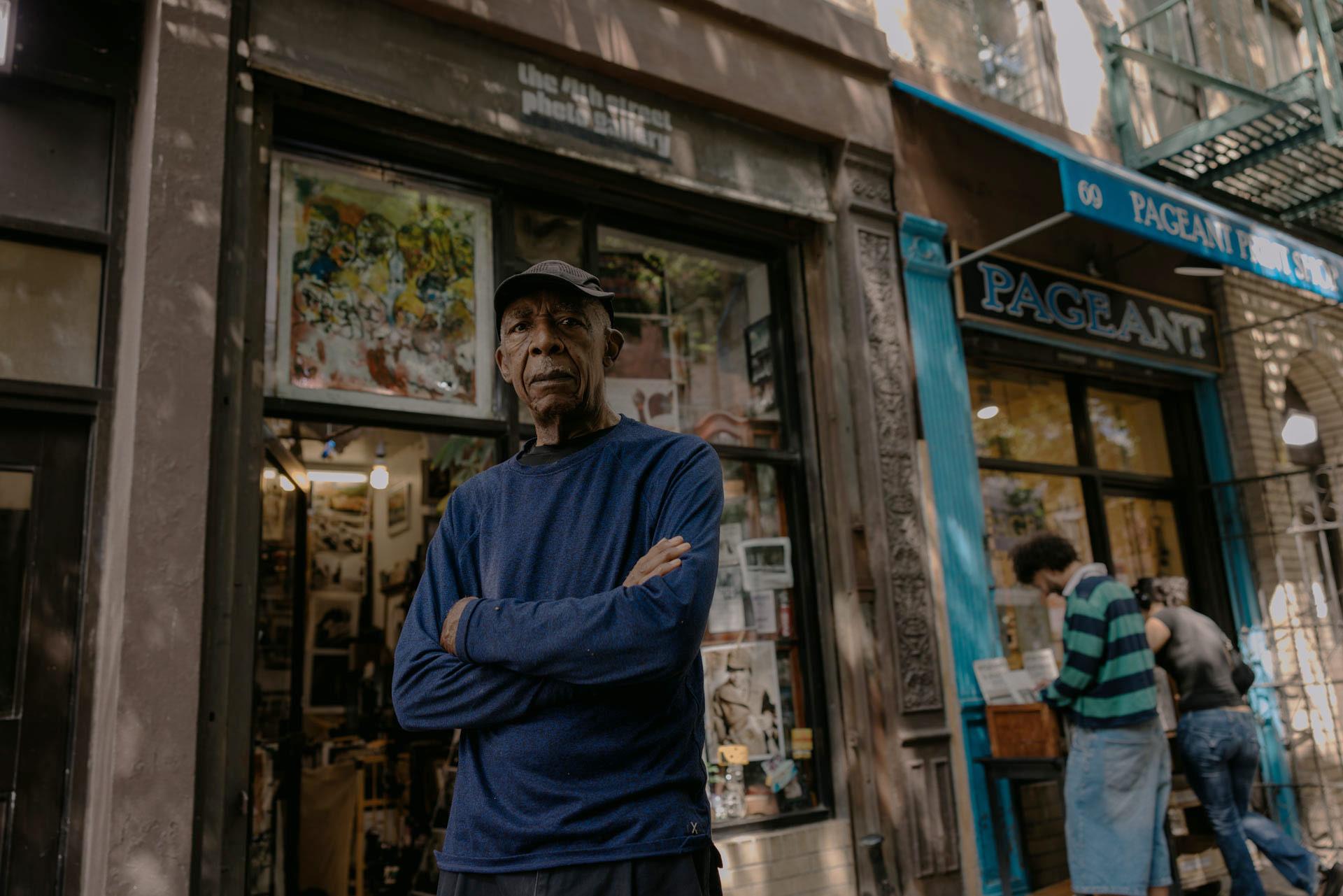A walk through Manhattan’s Chinatown—one of the country’s largest—is a vibrant sensory adventure. Lanterns blow under the awnings of gift shops, which glow with golden trinkets. Whole roast ducks hang behind noodle shop windows. Vendors wheel produce crates into grocery stores, while children race around them. But it wasn’t always like this.
While the Gold Rush brought waves of Chinese immigrants into the US in the mid-1800s, not long after which NYC’s Chinatown started to take early shape, a rise in anti-Chinese sentiment brewed among non-Chinese laborers. This paved the way for the Chinese Exclusion Act in 1882, which effectively barred Chinese immigration to the US for a few decades. However, a loophole allowed certain businesses, including restaurants, to qualify for “merchant status.” With this special visa, many Chinese merchants were able to travel between China and the US—and bring employees back with them. Workers began forming communities, teaming up to run larger restaurants and employing family and friends from back home.

The extended Fong On family. Courtesy, Fong On
One result: a massive restaurant boom. The number of Chinese restaurants in NYC quadrupled from 1910 to 1920, and expanded again during the 1960s and ’70s with the passing of two immigration and naturalization acts. Today, Chinatown is one of the City’s top destinations, drawing millions to its streets each year. And while its landscape has evolved rapidly in recent years, a number of venerable establishments—where the owners often span generations—endure.
Read on for the stories of a few community pioneers, as they recall life in Chinatown’s earlier days, reflect on the neighborhood’s evolution and lean on one another to preserve the old while adapting to the new.

Paul Eng
Fong On – Paul Eng
Since 1933, locals have relied on Fong On for quality tofu, soy milk and dou fu fa (tofu pudding). Yet through the years, none of the recipes in the City’s oldest family-run tofu shop—likely the first of its kind in NYC—were written down.
For Paul Eng, this made taking over his grandfather’s enterprise tricky, though the business has always been a part of him. “I was constantly helping out there. So were my brothers, father, mother, cousins—everyone was pitching in,” says Eng. He remembers working the evening shift as a teen alongside his mom after they extended shop hours to stay competitive. “Our lives revolved around the business.”

Fong On's former downstairs location; Bing Sun Eng, Paul's grandfather and one of the shop's founders. Courtesy, Fong On

A wall in Fong On
In 2017, after Eng’s father passed away, many of the longtime staff were ready to retire. Since business had slowed, the family decided to close operations.
But Eng soon realized that Fong On was what he needed. Wrapping up a decade abroad, now married and a father, he sought to replant his roots. “Coming back to this community is where I felt the most support and comfort,” he says. “It’s why I rebooted the store.”


The tofu-making process
In 2019, he reopened Fong On in a fresh location on Division Street, a few blocks from its original spot on Mott Street—long a center of culinary activity in Chinatown. After consulting with family on recipe remnants (“like folklore,” he says), drawing on his own memories and even watching YouTube videos, Eng crafted recipes of his own.


Today, Fong On carries its classics, some with a modern twist (like rainbow jelly topping). And Eng has a mission to inspire all to see tofu in a new way. Long considered a flavorless but healthier meat substitute, tofu is having a coming-of-age, says Eng. This spring, renowned fine-dining restaurant Eleven Madison Park is spotlighting Fong On’s products on its menu.
To Eng, this signals a changing tide. His hope: as more people discover the value and versatility of tofu, the future for Fong On will be secure.

Christina Seid
Chinatown Ice Cream Factory – Christina Seid
Before Insta-worthy ice cream shops took over the City, there was Chinatown Ice Cream Factory. Landing on the scene in 1977, it made waves with its homemade Asian-inspired flavors, like red bean and mango, at a time when most ice-cream shops were sticking with basic flavors like chocolate and vanilla.
“In the late ’70s, Häagen-Dazs [another born-in-NYC business] was looked at as an innovator,” recalls owner Christina Seid. “But here was my dad, making green tea and lychee! He was kind of a genius.”

Seid’s father, Phillip, started the business with one of his brothers. As a child, Christina was often in the shop helping out. Her mornings were spent restocking bins of candy, which they sold in the early days. “I still love the smell of candy in the morning,” she says.

For a while, the three were the shop’s only full-time workers. And while there were inevitably moments of tension, Christina is grateful for how things worked out. “As a kid, I had to listen to my dad because he was my dad! But as I got older, I learned to assert myself if I didn’t think something in the shop was working.” Having built this chemistry, she says stepping into management felt natural. It also made her the closest of her siblings with her dad. Together, they ran the shop until Christina’s father passed away just over a year ago (her uncle had passed away years earlier).


These days, she’s working on reviving a special dynamic among local businesses, one she feels has waned with time. “Back in the day, all the shop neighbors knew each other. Their kids played together,” she says. “I’m trying to bring that back.”
One way she’s doing this: a neighborhood collab series. Earlier this year, Seid teamed up with Xi’an Famous Foods and Jing Fong to offer limited-edition flavors like chili crisp and salted duck egg. Her customers were thrilled, eager to support several of their favorite food joints at once.

Seid says she plans to run the shop until she can’t anymore. Not only does her father’s spirit live on in her work, but she’s hopeful that might continue to the next generation. Her 12-year-old recently expressed interest in helping out over the summer. “If [my kids] don’t want to work there, I won’t force them. But it does become a part of who you are.”

Truman Lam
Jing Fong – Truman Lam
Most Chinese families have a memory in a classic Chinese banquet-style hall, with its chandelier-lit ceilings and round tables, often surrounded by red chairs.
For many New Yorkers, like Truman Lam, that hall was Jing Fong. His grandfather opened its doors in 1978 at 24 Elizabeth Street, with seating for 150. “We had four generations eating at the restaurant,” says Lam, who remembers countless birthdays, celebrations and regular family dinners there as a kid.

Jing Fong's dining room in its former Elizabeth Street location. Courtesy, Jing Fong
In 1993, Jing Fong moved to its 20 Elizabeth Street location, becoming the neighborhood’s largest dim sum and banquet hall for decades. It could seat 800 people, and often did for graduations, weddings and the rush of Sunday lunch.
But over the years, much of that changed. After taking over operations from his parents in 2010, Lam noticed the neighborhood’s Chinese population shrinking, which shifted Jing Fong’s core clientele. Forced to downsize due to the pandemic-induced downturn, Lam relocated Jing Fong to a 125-seat space on Centre Street.


To keep up with a changing customer base and a smaller workforce (now less than half its former size), Lam looked for ways to keep business afloat. He revised the menu, narrowing the dim sum selection from around 100 items to the 40 most popular. He also maintained a strong social media presence and broadened Jing Fong’s audience with a second location on the Upper West Side. But at the end of the day, he knows the future is uncertain.

At the very least, Lam has been reminded that the restaurant remains a staple in its patrons’ hearts. “It was really heartwarming to see the restaurant was so important to so many people,” says Lam of the loyalists who came, many from New Jersey, while the place was struggling. “It had a place in their lives and memories.” For Lam, that might just help Jing Fong live on.

Cory Ng
Potluck Club – Cory Ng
For Cory Ng, opening a restaurant in Chinatown with five of his childhood friends was a no-brainer. They were born and raised in the area, attended the same school and hung out in the same parks. “It’s all we’ve ever known as home,” says Ng.
But the team behind Potluck Club—a modern Cantonese-American restaurant that debuted in 2022—isn’t just in it for the food. For Ng, it’s a way to give back to the town that raised them.

Cory Ng with his mom and dad at his 5th-grade graduation. Courtesy, Potluck Club
“Our parents came with nothing,” he says. “They had a dream for us, like, ‘You are going to college and going to thrive in this country.’ Every kid I grew up with got a college degree, but no one gets a college degree and then stays in Chinatown to make noodles.” While Ng says he understands why many peers have moved out of the neighborhood, it also means fewer businesses can hand their keys to the next generation.

Ng's grandfather, mom and uncle outside Ming Kee Produce, the former family business, 1984. Courtesy, Potluck Club
The Potluck Club aims to set a new standard. On the grounds where Ng’s grandfather ran a Chinese-sausage distributing business for 40 years, Ng and his team have erected a new space. It’s one they hope reflects their own lived experience.

“It’s a Y2K Cantonese vibe,” Ng says of the restaurant’s interior. The walls pay homage to the team’s childhood pop-culture idols (Jackie Chan and Old Master Q comic books). On the menu, chef Zhan Chen spotlights Cantonese-American classics with fun twists, like bolo bao milk toast with milk tea butter, and salt-and-pepper chicken with scallion biscuits, pickled jalapeño and chili-plum jam.

The team also supports fellow local businesses. They source their produce from nearby vendors and their dishware from Wing on Wo and Co., the oldest shop in Chinatown and currently in its fifth generation of family ownership .
While the friends’ have a space that reflects their sensibilities, they want to honor all who came before them. Once a month, Potluck Club transforms into a senior center, welcoming hundreds of elders for free produce, hot meals and good company.

Courtesy, Potluck Club
“People come in groups of friends and as couples,” says Ng, whose own grandma attends, often skipping the line to see her grandson. “They laid the groundwork for us to thrive and have a good life. We want to say thank you.”

Ng’s team knows a changing Chinatown is inevitable, but they believe their generation and future ones have the power—and responsibility—to ignite a renaissance. “Our parents are ready to retire, and they deserve it,” says Ng. “If you don’t want to see Chinatown go away, you need to invest in it. It’s our time now.”
For more Chinatown stories, see our neighborhood guide.






